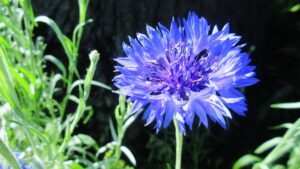Below, we’ll explore some fantastic flower seeds that you can plant in May, each with its unique traits and cultivation tips to help you achieve a stunning garden.
Alyssum
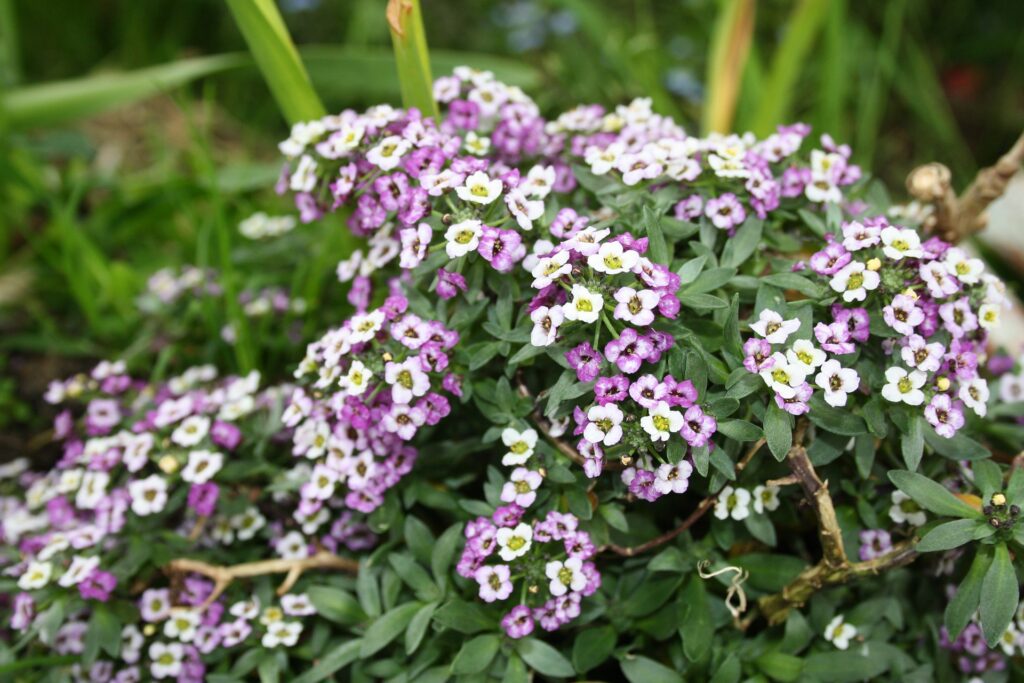
Alyssum, known for its sweet fragrance and delicate white or purple blossoms, is a delightful choice for May planting. These low-growing annuals thrive in sunny spots and can spread cheerfully over garden borders or hanging baskets.
Growing Tips:
Soil Requirements: Alyssum prefers well-drained, sandy soil. Adding compost can enhance fertility and ensure optimal growth.
Watering Needs: While tolerant of dry conditions, consistent watering is advised to support blooming. Aim for moist but not saturated soil.
Sunlight: These flowers flourish in full sun, so choose a location where they can soak up rays for at least six hours a day.
Companions: Alyssum pairs beautifully with pansies and snapdragons, and its fragrant flowers can attract beneficial insects, including pollinators like bees and butterflies.
Asters
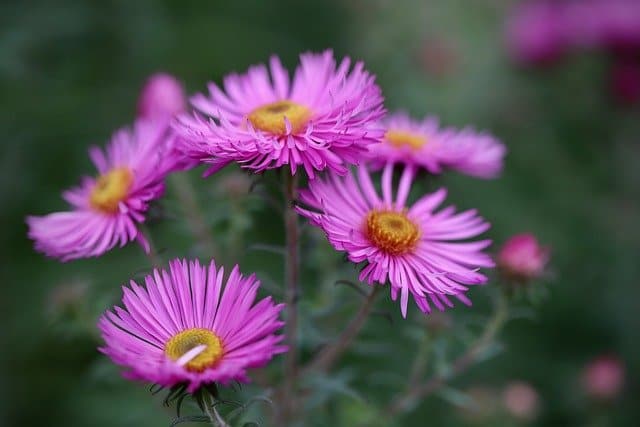
Asters are perennial gems that bloom profusely in late summer and early fall. With vibrant colors ranging from white to deep purple, they bring a pop of color to your garden right when you need it most.
Growing Tips:
Ideal Location: Asters thrive in full sun and average soil conditions. However, ensure that the location is not too wet, as they dislike soggy roots.
Watering Guidelines: Once established, asters are fairly drought-tolerant. Water them during dry spells but avoid overwatering, especially in the cooler months.
Pruning: Cutting back the plants after blooming can encourage bushier growth and more robust blooms the following year.
Native Varieties: Many aster species are native to North America, which means they are well adapted to local environments and beneficial for local pollinators.
Black Eyed Susan
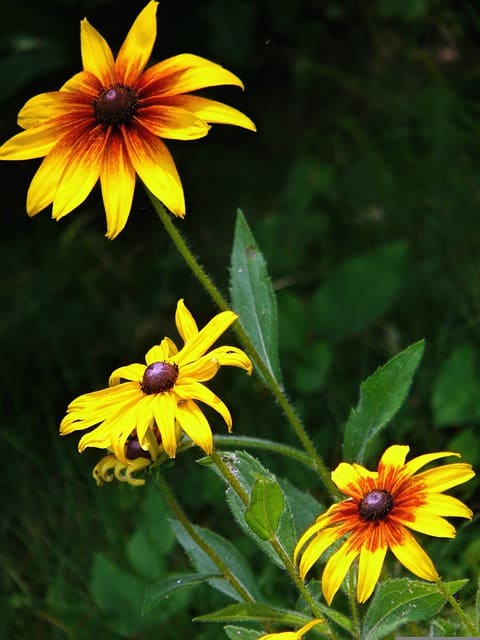
Iconic for their vibrant golden yellow petals and dark brown centers, Black Eyed Susans (Rudbeckia hirta) are a staple in wildflower gardens. They thrive in various conditions, making them easy to grow and care for.
Growing Tips:
Soil Preparation: Although Black Eyed Susans tolerate poor soil, incorporating organic matter can promote healthier plants and more prolific blooms.
Watering Practices: These flowers are drought-resistant once established, but regular watering during dry spells can enhance bloom production.
Sunlight Exposure: A full sun exposure will yield the best results, so plant them in areas that absorb bright sunlight for at least six hours daily.
Wildlife Benefits: Black Eyed Susans serve as excellent nectar sources for pollinators and can be left standing in winter, providing seeds for birds.
Bloodroot

Bloodroot (Sanguinaria canadensis) is a magical perennial that blooms early in the spring with delicate white flowers. Its lush green leaves spread through shady areas, making it a fantastic addition to woodland gardens.
Growing Tips:
Planting Location: Preferred in shady, moist locations, Bloodroot flourishes under the cover of trees where sunlight is filtered.
Soil Requirements: Use rich, well-draining soil that retains moisture. A mixture of mulch and leaf litter can mimic its natural habitat.
Propagation: Bloodroot can be propagated through its rhizomes, leading to new growth each season.
Cautionary Note: While Bloodroot is captivating, all parts of the plant are toxic if ingested, so it should be kept out of reach of pets and children.
Candytuft
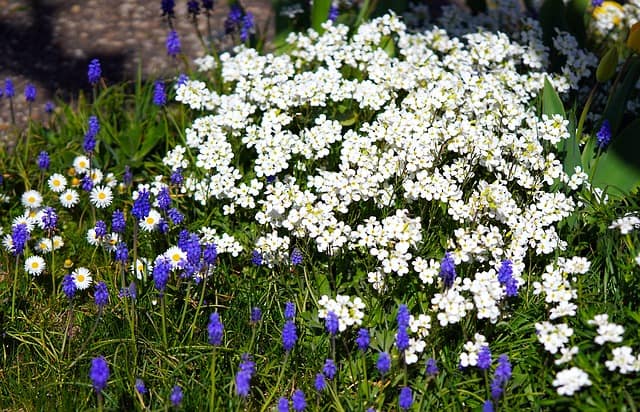
Candytuft (Iberis umbellata) is a charming annual that graces gardens with its fragrant clusters of white, pink, or purple flowers. It’s known for its low-growing habit, making it ideal for borders and rock gardens.
Growing Tips:
Soil Needs: Candytuft does best in well-drained, sandy or loamy soils. Compacted or heavy soils may hinder growth.
Watering Routine: Water regularly during hot spells to keep the soil evenly moist. However, avoid overwatering, which can lead to root rot.
Sunlight Preference: These flowers prefer full sun to partial shade. Ensure they receive at least six hours of sunlight daily for optimal blooming.
Attracting Pollinators: Candytuft’s vibrant flowers attract bees and butterflies, making it an excellent choice for pollinator gardens.
Catmint
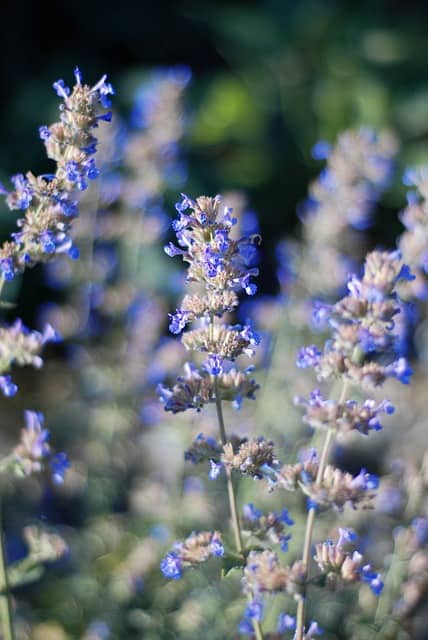
Catmint (Nepeta spp.) is a resilient perennial that boasts fragrant foliage and lovely lavender-blue flowers. Known for its drought tolerance and ability to thrive in various conditions, Catmint is perfect for busy gardeners.
Growing Tips:
Ideal Conditions: Catmint requires full sun and well-draining soil. It can thrive in poor soils but appreciates a little compost for added nourishment.
Watering Instructive: Once established, this plant is drought-tolerant. Water occasionally during dry spells, but ensure the soil drains well.
Pruning for Growth: Pruning spent flowers encourages further blooming throughout the summer.
Gardening Benefits: Catmint can deter pests while attracting pollinators, making it an invaluable addition to your garden.
Columbine
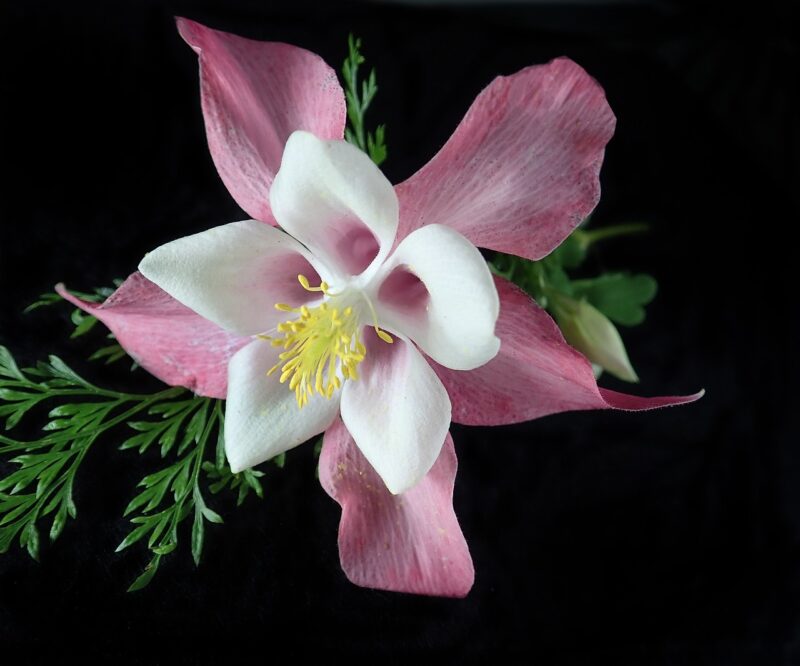
Columbines (Aquilegia) are elegant perennial flowers known for their unique, lantern-shaped blooms and delicate foliage. With a range of colors from blues to yellows, they bring whimsical charm to any garden.
Growing Tips:
Best Location: These plants thrive in partial shade and cooler climates. In hotter regions, they do best with some afternoon shade.
Soil Preferences: Columbines prefer moist, well-drained soil rich in organic matter. Adding compost can enhance soil quality.
Watering Guidance: Regular watering is essential, especially during dry spells, to support continued blooming.
Natural Hybridization: Columbines readily hybridize, resulting in various colors and shapes, which can make for a unique and personal touch in your garden.
Cosmos
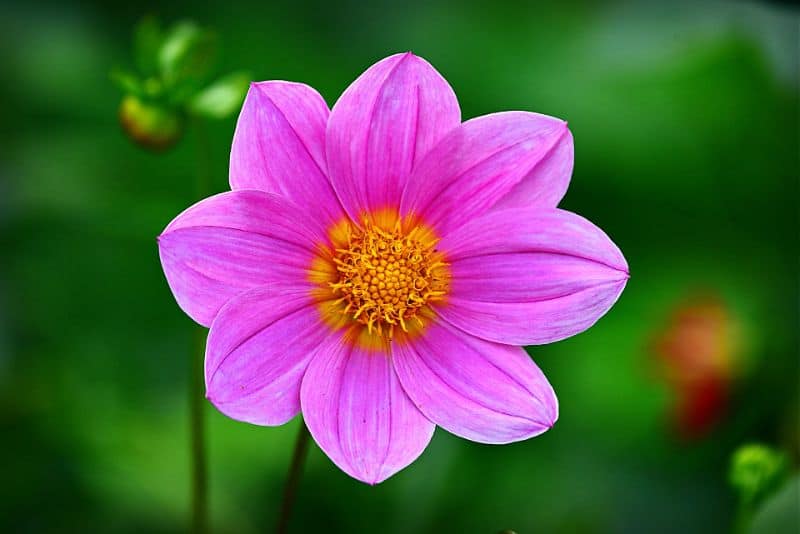
Cosmos are quintessential summer annuals that provide cheerful blooms in shades of pink, white, and orange. They are incredibly easy to grow and make vibrant additions to any garden.
Growing Tips:
Sun Requirements: Cosmos thrive in full sun, requiring at least six hours of sunlight. They can tolerate various soils but prefer well-drained areas.
Watering Techniques: Drought-tolerant once established, Cosmos prefer to dry out between watering. Overwatering can lead to leggy growth.
Height Management: Consider staking taller varieties to prevent flopping over, especially during windy conditions.
Pollinator Attraction: Cosmos flowers are highly attractive to butterflies and bees, making them an excellent addition for a vibrant, lively garden.
Creeping Phlox
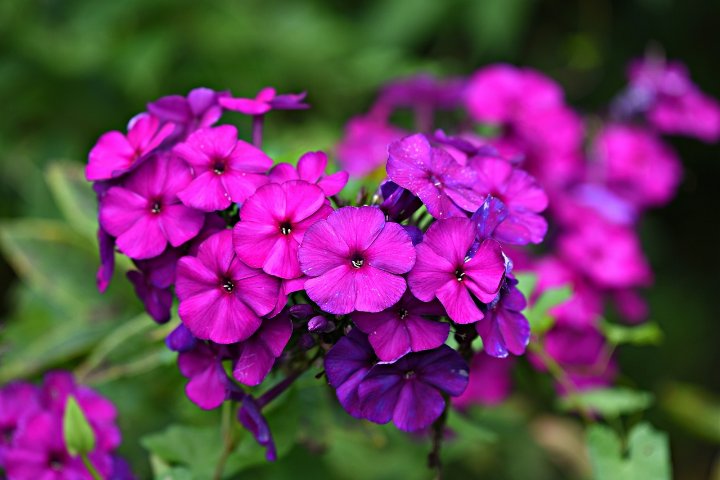
Creeping Phlox (Phlox subulata) bursts into bloom in spring with a blanket of colorful flowers, making it perfect for ground cover. These perennials are known for their dazzling blossoms in shades of pink, white, and purple.
Growing Tips:
Ideal Conditions: They prefer sunny spots with well-drained soil. A slight drought tolerance makes them suitable for rock gardens or paths.
Watering Strategy: Water them during prolonged dry spells, especially during their flowering period, to ensure a full display.
Encouragement of Blooming: Deadheading spent flowers can encourage additional blooms and prolong the flowering period.
Versatile Use: Beyond covering bare ground, creeping phlox can also be used in containers or as borders, creating a stunning visual effect wherever utilized.
Echinacea
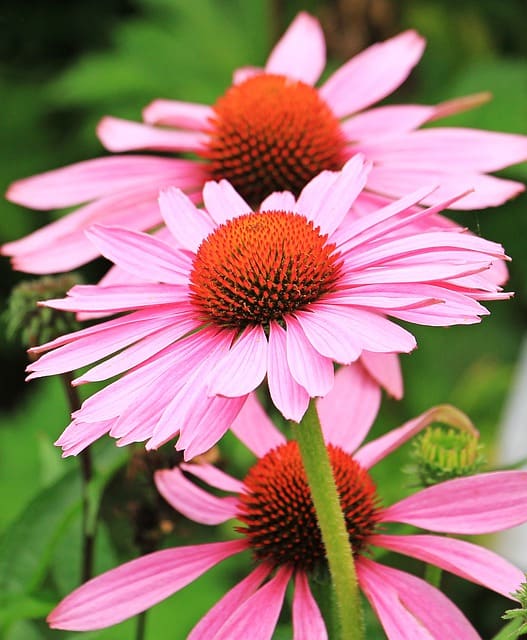
Echinacea, also known as coneflower, is a beloved perennial known for its striking, daisy-like blooms. With a rich range of colors, including vibrant purples and pinks, they provide a burst of beauty and are renowned for their resilience.
Growing Tips:
Sunshine Needs: Echinacea thrives in full sun to partial shade and is tolerant of drought and poor soil.
Watering Practices: Once established, water sparingly. They thrive in well-drained soil and can endure dry periods.
Dividing Plants: To maintain plant health and vigor, divide Echinacea plants every three to four years in early spring or fall.
Wildlife Habitat: Echinacea is a magnet for butterflies and bees, while its seed heads become a food source for birds in the winter.
Geranium
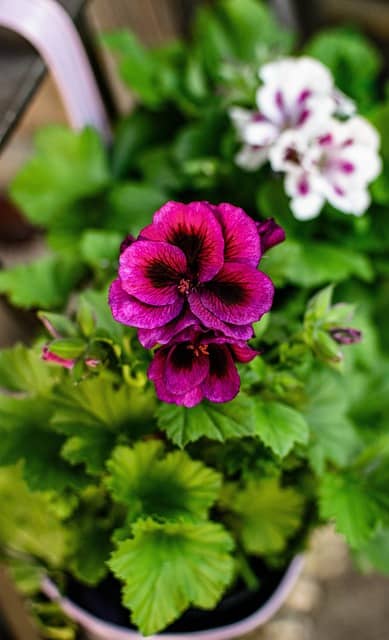
Geraniums (Pelargonium spp.) are a popular garden choice, known for their bold flowers and lush foliage. Available in annual and perennial varieties, geraniums are versatile and bring life and color to any space.
Growing Tips:
Location Preferences: They flourish in full sun, although in hotter climates, some afternoon shade can be beneficial.
Soil Requirements: Geraniums prefer well-drained soil enriched with organic matter. A potting mix is ideal for container planting.
Watering Needs: Allow the soil to dry slightly between waterings; overwatering may lead to root rot.
Container Gardening: Geraniums are perfect for container arrangements, allowing you to brighten patios and balconies or create standout displays on garden steps.
Hellebore
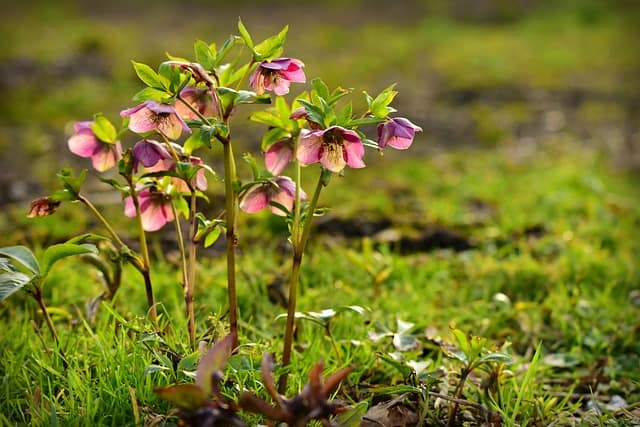
Hellebores, often called the “Christmas rose,” are stunning perennials that bloom in early spring, sometimes when there’s still snow on the ground. Their unique, nodding flowers come in various shades, including white, purple, green, and even speckled colors.
Growing Tips:
Shade Preferences: Hellebores perform best in partial to full shade, making them ideal for woodland gardens or areas with dappled sunlight.
Soil Needs: They thrive in rich, well-drained soil that retains some moisture but is not waterlogged. Incorporating organic matter can help meet these requirements.
Watering Routine: Regular watering during dry spells is essential, especially when plants are establishing.
Garden Benefits: Hellebores are deer-resistant and can provide early nectar for pollinators, making them both a practical and beautiful choice for your garden.
Hibiscus
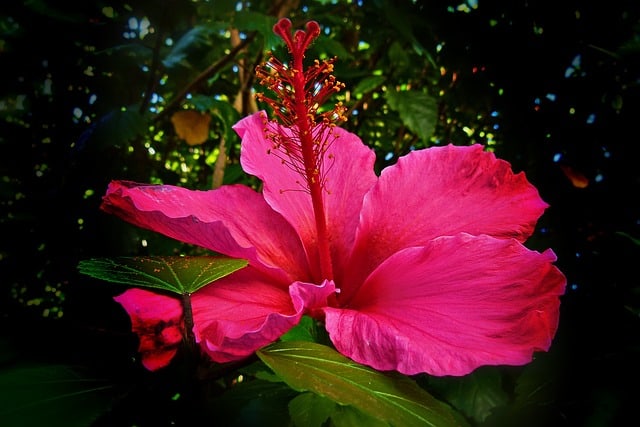
Hibiscus flowers stand out with their large, tropical blooms and vibrant colors, perfect for adding an exotic flair to your garden. They can be perennial or annual, depending on your growing zone, providing options for gardeners everywhere.
Growing Tips:
Sunlight Needs: Hibiscus thrives in full sun, needing at least six hours of sunlight daily for optimal flower production.
Soil Preferences: They prefer fertile, well-drained soil with plenty of organic material. Adding compost prior to planting can boost their growth.
Watering Requirements: Keep the soil consistently moist, especially during hot weather, as hibiscus enjoys humid conditions.
Uses in the Garden: These flowers not only attract pollinators but can also be grown in containers, making them versatile for garden arrangements or patios.
Hollyhock
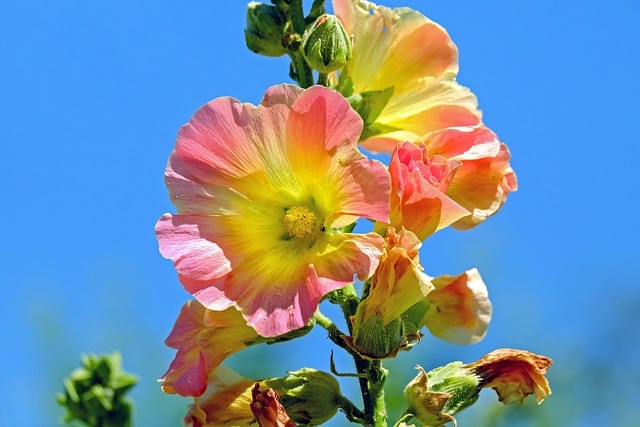
Hollyhocks are tall, striking perennials that bring a cottage garden feel with their towering stalks of colorful blooms. They bloom in a variety of vibrant hues, including pinks, purples, and whites, adding vertical interest to gardens.
Growing Tips:
Spacing and Location: Plant hollyhocks in well-drained soil with plenty of sunlight. They can grow quite tall, so spacing them well is crucial for air circulation.
Watering Practices: While they can tolerate some drought, providing regular watering during dry spells can enhance blooms.
Staking: Taller varieties may require support to prevent them from toppling over in strong winds.
Attracting Pollinators: The large surface area of hollyhock flowers makes them a favorite among bees, adding to the biodiversity of your garden.
Lantana
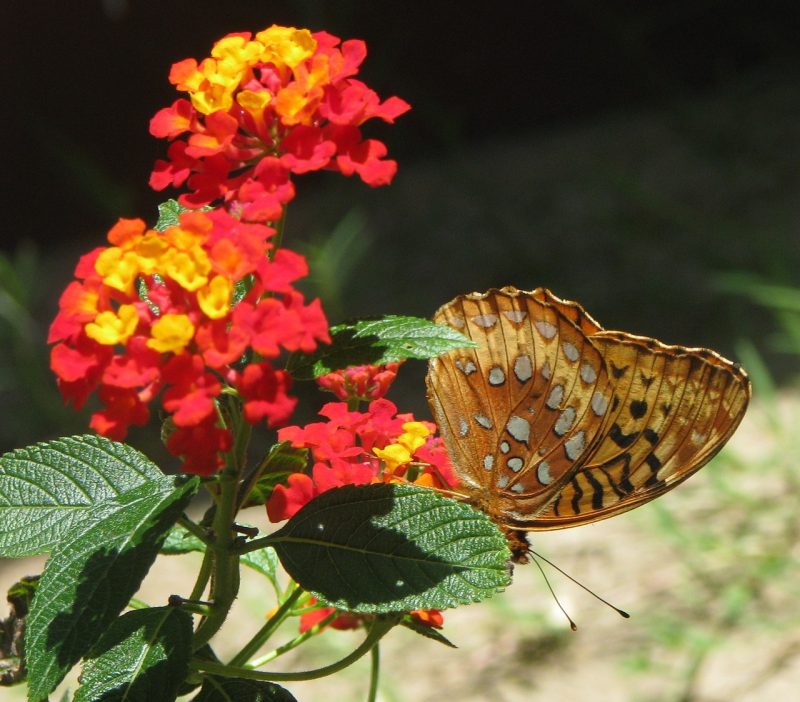
Lantanas are hardy annuals or perennials with clusters of tiny flowers that attract butterflies and hummingbirds. These colorful blooms are often multicolored, giving them a unique appearance as they change shades as they mature.
Growing Tips:
Sunshine Needs: Lantana thrives in full sun and can handle drought conditions once established, making them perfect for low-maintenance gardens.
Soil Preferences: They prefer well-drained soil and can tolerate poor soil conditions, adding versatility to planting options.
Watering Recommendations: While drought-tolerant, regular watering during the establishment phase will ensure robust growth.
Landscape Use: Lantanas work wonderfully in mass plantings, borders, or as ground cover, bringing bursts of color to any landscape.
Lavender
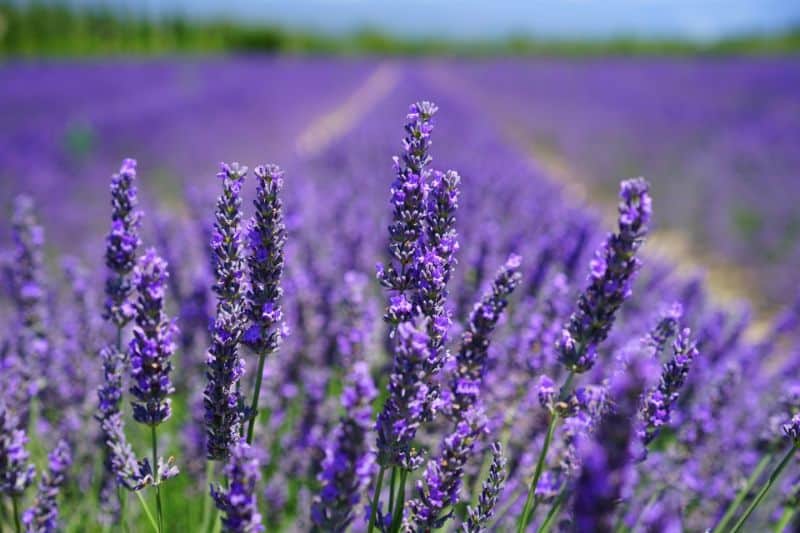
Lavender is beloved for its beautiful purple flowers and delightful fragrance. This perennial herb is perfect for garden borders, herb gardens, or as a standalone feature in pots.
Growing Tips:
Sunshine Requirements: Lavender thrives in full sun, requiring at least six hours of direct sunlight daily.
Soil Needs: It prefers well-drained, sandy soil with a slightly alkaline pH. Avoid heavy or clay soils that retain moisture.
Watering Tips: Once established, lavender is drought-tolerant. Water sparingly to prevent root rot; allowing the soil to dry out is essential.
Pollinator Support: Lavender’s nectar-rich flowers attract bees, butterflies, and other pollinators, making it a wonderful addition for wildlife gardening.
Marigolds
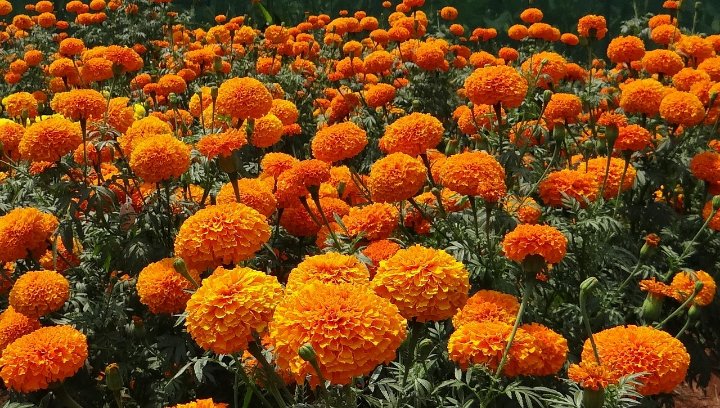
Marigolds are easy-to-grow annuals known for their bright, cheerful blooms and ability to deter pests. Their vibrant orange and yellow flowers can liven up any garden space while providing beneficial properties.
Growing Tips:
Sunlight Requirements: Marigolds prefer full sun and thrive with at least 6 hours of sunlight each day.
Watering Practices: They prefer evenly moist soil but can handle some drought once established. Water at the base to keep foliage dry and prevent fungal issues.
Deadheading: Regular deadheading promotes additional blooms and extends their flowering period.
Pest Deterrent: Marigolds are particularly known for repelling nematodes and aphids, making them excellent companions for vegetable gardens.
Morning Glories
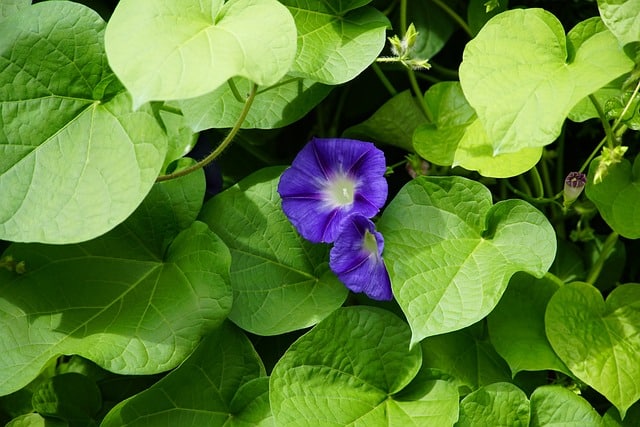
Morning glories are twining annual vines that provide one of the most beautiful floral displays in summer. Their trumpet-shaped flowers open in the morning and close as the sun sets, providing a stunning sight for early risers.
Growing Tips:
Light Preferences: Morning glories love full sun and need at least six hours of direct sunlight to thrive.
Soil Preferences: While adaptable, they prefer lightweight, well-drained soil. Adding compost can enhance nutrient levels.
Support for Growth: Provide a sturdy trellis or support for these vines to climb and flourish, as they can grow quite vigorously.
Ideal for Trellises: Their climbing nature makes morning glories perfect for covering fences, arbors, or trellises with vibrant colors and lush foliage.
Peonies
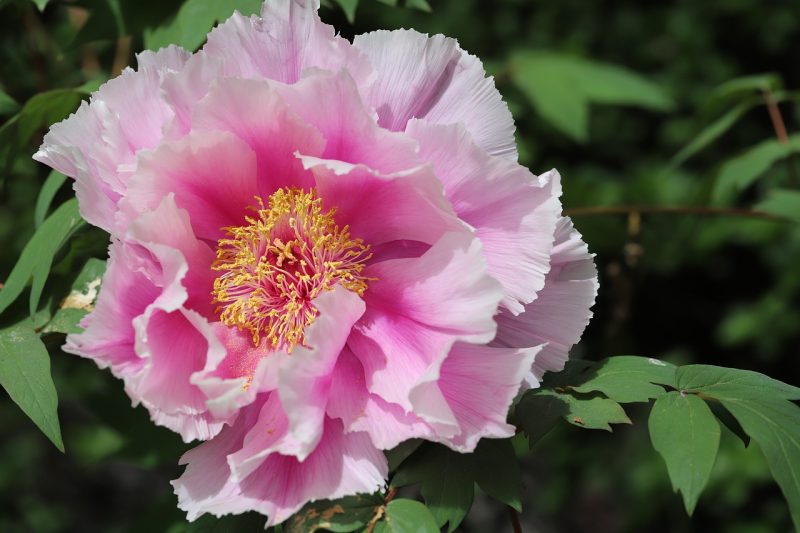
Peonies are classic perennials known for their large, lush blooms and luxurious fragrance. With a range of colors, including pink, white, and deep red, they can bring an element of romance to any garden.
Growing Tips:
Sunlight Needs: Peonies prefer full sun to part shade, ideally with at least six hours of sunlight to produce the best blooms.
Soil Preferences: They thrive in rich, well-drained soil, and adding organic matter during planting can boost their growth.
Watering Advice: Regular watering during dry spells is critical, especially while establishing roots in the first year.
Longevity: Peonies can live for decades, making them a splendid perennial investment for long-term garden delight.
Poppies
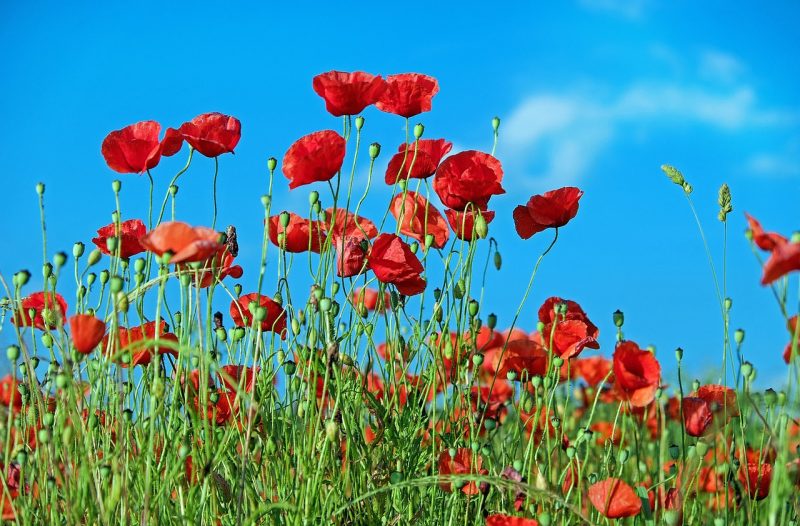
Poppies are iconic for their delicate, paper-like petals and array of colors. Annual varieties, like the California poppy, or perennial types, such as the Oriental poppy, add diverse beauty to your garden.
Growing Tips:
Location Requirements: Poppies thrive in full sun and prefer well-drained soils with low fertility, which encourages the best flowering.
Seeding Tips: Direct seeding is recommended in early spring or fall. Thin seedlings to prevent overcrowding for robust growth.
Watering Needs: Once established, poppies are drought-tolerant. Water sparingly, as they do not tolerate overly wet conditions.
Visual Appeal: Their vibrant hues and unique blossoms can create breathtaking displays and natural-textured gardens.
Roses
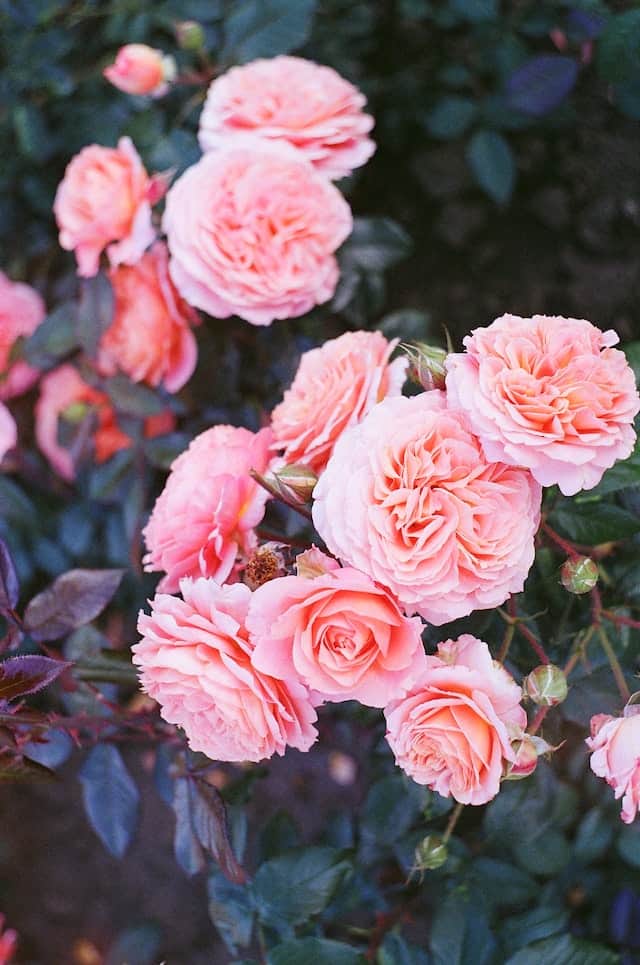
Roses are the quintessential garden flowers, adored for their beauty and fragrance. Although they come with a reputation for being finicky, with the right care, they can thrive and provide stunning blooms.
Growing Tips:
Light Requirements: Roses need full sun, ideally 6 to 8 hours of sunlight daily for optimal flowering.
Soil Needs: Preferably plant in well-drained, nutrient-rich soil. Amending the soil with compost or organic matter can enhance growth.
Watering Routine: Water deeply but infrequently, allowing the top inch of soil to dry out between waterings to encourage root depth.
Diversity: With countless varieties, you can choose from climbing roses, shrub roses, or hybrid teas, ensuring your garden reflects your style.
Salvia
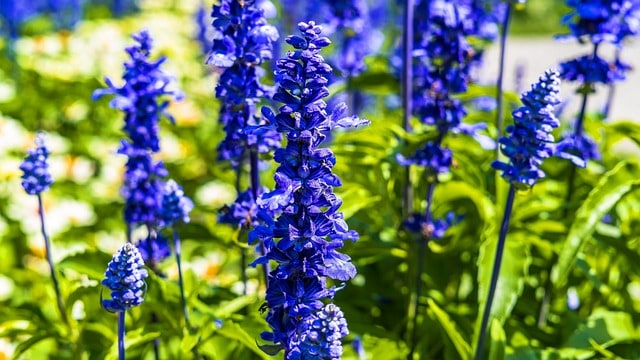
Salvia is a diverse group of flowering plants known for their striking spikes of flowers and aromatic foliage. They are not only beautiful but also attract numerous pollinators to your garden.
Growing Tips:
Ideal Conditions: Most salvias thrive in full sun with at least six hours of sunlight. They are drought-tolerant once established, making them low-maintenance.
Soil Preferences: Well-drained, sandy, or loamy soil with a neutral pH is ideal. Overly rich soil can sometimes lead to weaker plants.
Watering Guidelines: Allow the soil to dry between waterings; this enhances drought resistance and prevents root diseases.
Floral Variety: Salvia blooms in various colors—from bright blues to vibrant reds—adding dimension and interest to any garden space.
Shasta Daisy
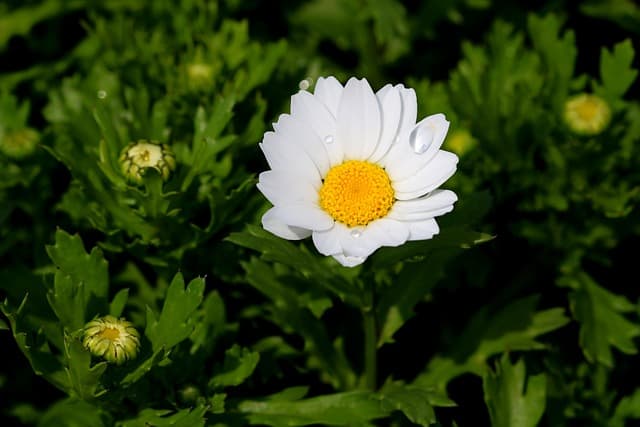
The Shasta daisy is a perennial favorite in many gardens for its classic white petals and bright yellow centers. These cheerful flowers bloom from early summer through fall, providing continuous beauty.
Growing Tips:
Sunlight Needs: Shasta daisies thrive in full sun but can tolerate light shade, providing them flexibility in garden placement.
Soil Requirements: They prefer well-drained soil enriched with organic material. Severe drainage issues can hinder growth.
Watering Strategy: Regular watering during the hot summer months ensures steady growth and encourages blooming.
Companion Planting: Shasta daisies make excellent companions for other perennials and provide a lovely cut flower for arrangements.
Sunflowers
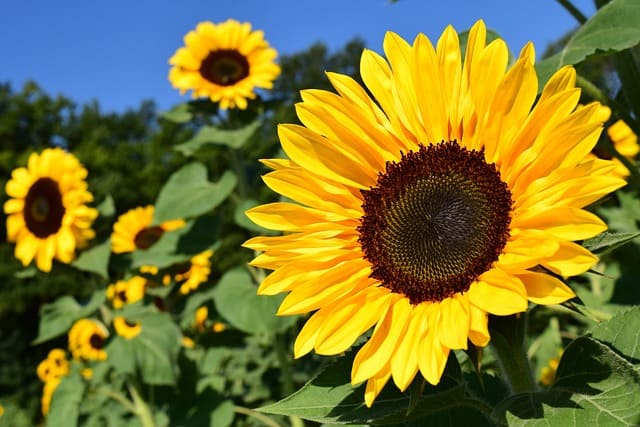
Sunflowers are the sunny symbols of summer, radiating warmth and happiness with their towering stalks and vibrant yellow petals. They come in various sizes and colors, making them versatile additions to gardens.
Growing Tips:
Sunlight Requirements: As their name suggests, sunflowers thrive in full sun, requiring at least six hours of direct sunlight each day.
Soil Preferences: They adapt well to most garden soils but prefer well-drained, fertile soil to support their vigorous growth.
Watering Tips: Deep watering is essential, particularly during dry spells, but avoid overwatering to prevent root rot.
Wildlife Attraction: Sunflowers are not only beautiful to look at; their seeds attract birds, while blooms are a nectar source for bees.
Yarrow
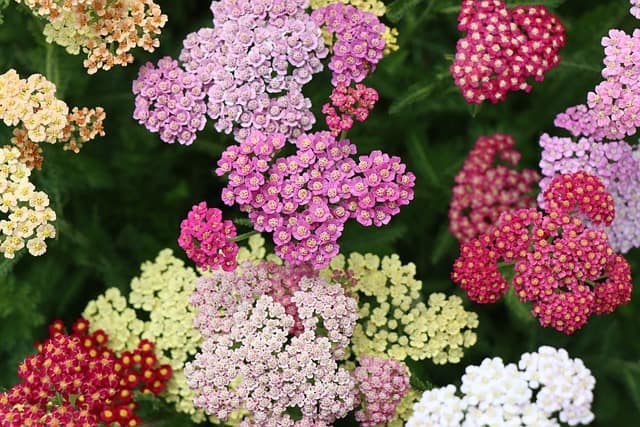
Yarrow (Achillea millefolium) is a hardy perennial known for its feathery leaves and flat-topped clusters of small flowers. Available in colors like yellow, pink, and white, yarrow is perfect for cottage gardens or natural meadows.
Growing Tips:
Ideal Conditions: Yarrow thrives in full sun and is highly adaptable to various soils, although it prefers well-drained, somewhat poor conditions.
Watering Needs: Once established, yarrow requires little watering, making it drought-tolerant and low-maintenance.
Cutting Back: Deadheading spent blooms can encourage a second wave of flowers and reduce self-seeding.
Medicinal Uses: Traditionally valued for its medicinal properties, yarrow can be used in herbal remedies, adding both beauty and function to your garden.
Zinnia
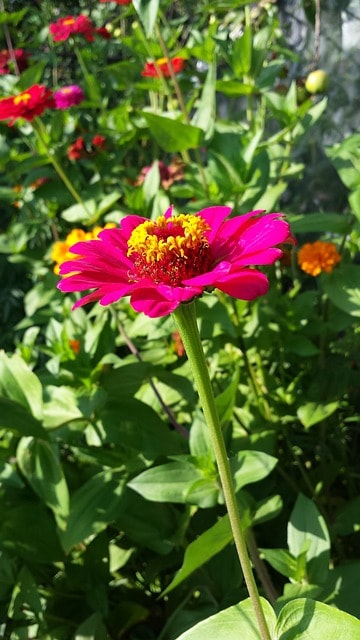
Zinnias are beloved for their bright colors and versatility, thriving in sunny gardens. These annuals bloom in various shapes and sizes, making them suitable for borders, cutting gardens, or for blending with other flowers.
Growing Tips:
Sunshine Needs: Zinnias thrive in full sun, needing at least six to eight hours of sunlight per day.
Soil Requirements: They prefer well-drained fertile soil and can be started indoors or sown directly into the garden.
Watering Guidelines: Water regularly to promote strong growth, especially during dry spells, but avoid getting water on the foliage to reduce disease.
Attracting Pollinators: Their colorful, nectar-rich blossoms invite butterflies and bees to the garden, encouraging a thriving ecosystem.




